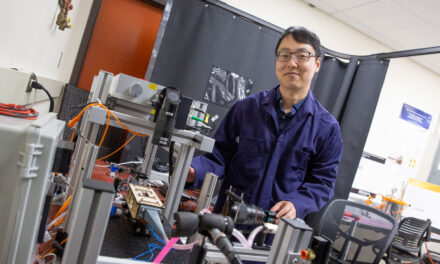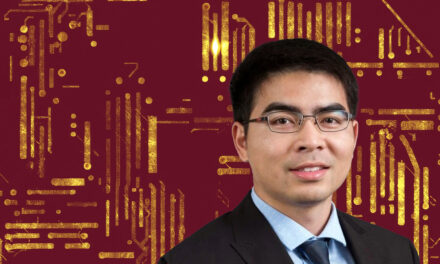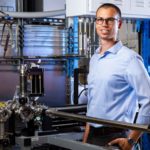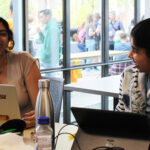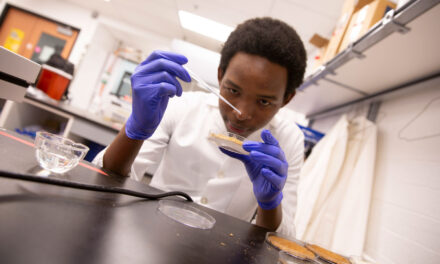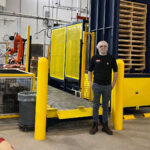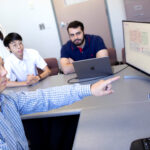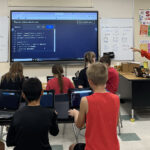
Designing algorithms for better data analysis and stronger networks
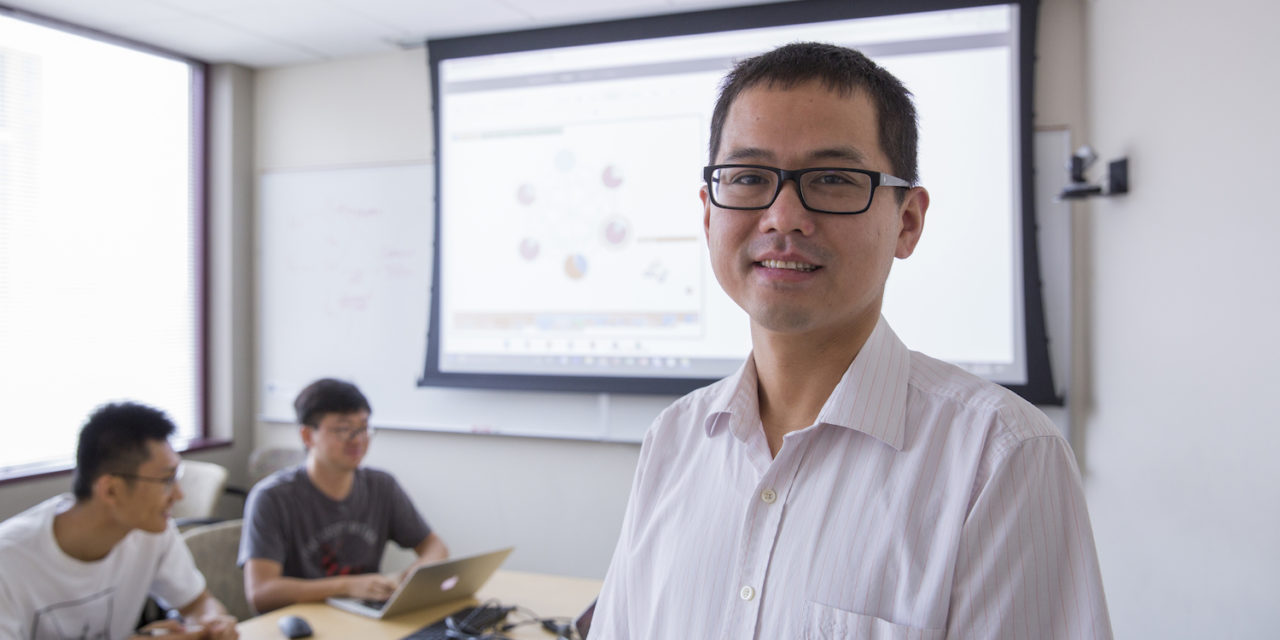
Above: Hanghang Tong, an assistant professor of computer science in Arizona State University’s Ira A. Fulton Schools of Engineering, studies networks and how to improve them in a wide range of applications through the design of novel algorithms. Photographer: Jessica Hochreiter/ASU
Hanghang Tong wants to help people as they go about their daily lives, do their jobs, interact with infrastructure and conduct research. Yet most of the people Tong’s work benefits may never know of the impact of his research.
Tong applies his expertise — large-scale data mining and machine learning — to research networks, including networks involved in online social interactions, electrical power grids, infrastructure, transportation and more. On a smaller scale example of networks, Tong focuses on graphs, which are people or other nodes that are linked together in varied and complex ways.
“My main research goal is to help the user understand and utilize graph- or network-related data,” says Tong, assistant professor of computer science in Arizona State University’s Ira A. Fulton Schools of Engineering.
One way that Tong and his students in the Data Lab@ASU are helping people is by studying teamwork. They realize how important social networks are for people working together to efficiently perform a task instead of working individually or over-communicating, and they set out to build upon the collaboration in this kind of network.
“We want to understand this kind of network environment, what kind of factors are important for high-performing teams, and we want to design an algorithm to foresee the success of the team at an early stage, or see the potential failure before it happens,” Tong said. “We’re also developing a new algorithm to enhance or to optimize the team composition so that the optimized team is more likely to perform better in the future.”
Designing algorithms to solve these kinds of challenges comes naturally to Tong.
“I think of myself as an algorithm person,” Tong said. “My interest comes from finding an important problem from an important application domain to look at, and then look at cool new algorithms and how they apply.”
His focus on the analysis of graph data targets a fundamental component of networks in a way that makes his research apply to a wide variety of applications.
“Graph is an important data type of different application domains,” Tong said. “It seems that if you look at different application domains you can always find a graph somewhere and somehow.”
Beyond helping teams work better together, Tong has also applied this type of network analysis algorithm to preventing malicious actors from harming infrastructure networks and is now using it to find a way to potentially foil terrorist activities.
From reaction to detection
Tong’s latest research project — funded by a $2.8 million Modeling Adversarial Activity award from the Defense Advanced Research Projects Agency — seeks to develop a new network analysis tool to detect indicators of weapons for mass terrorism activities. The research center HRL Laboratories leads the project.
Tong’s team for the project, which includes fellow computer science faculty Assistant Professor Jingrui He and Professor of Practice Nadya Bliss, is tasked with combining data from multiple data sources, a technique known as network alignment, and then identifying adverse activities using that data with a new algorithm that looks for highly probable WMT patterns through a process called subgraph matching.
This new framework is called Complex Analytics of Network of Networks, or CANON, which HRL Laboratories says can produce high-confidence warnings and indicators of WMT activities from multiple network sources with high accuracy at scale.
Tong has a strong background in network alignment and graph mining, and said he welcomes the opportunity to help DARPA address this challenge.
“This award offers a very important application scenario for us to validate our network alignment and subgraph matching algorithm, so we hope our work can make a tangible impact on this very real application domain,” Tong said.
Industry partnerships bring additional strengths
Tong said he is also excited to work with HRL Laboratories on this project.
“Our research interests have significant overlap, especially on networks, so our strengths can be complementary to each other,” Tong said. “We both hope that this is a starting point of much broader partnerships between the two institutions.”
He said he looks forward to having the benefit of HRL’s systems-level expertise and the use of its large computing facilities to conduct the research.
The collaboration will help to expand upon the work Tong has been conducting in the Data Lab@ASU.
“Network alignment and subgraph matching are at the very heart of our research agenda to develop new network analysis algorithms,” Tong said.
Broader applications for specific algorithms
Though his work with DARPA is aimed at a particular WMT detection application, Tong hopes the algorithm his team develops has many uses beyond this project.
“We don’t want to just develop an arbitrary algorithm with narrow applicability,” Tong said.
He hopes the algorithms he creates can also help other researchers in their various areas of science and engineering expertise.
“I feel other research can benefit from my research, and if it helps someone prove a new theorem or make a new algorithm that is better, more effective, faster or more scalable it always makes me excited,” Tong said.
A bright early career
After a postdoctoral fellowship at Carnegie Mellon University following his doctoral studies in machine learning, Tong worked as a research staff member at IBM T.J. Watson Research Center. And though he enjoyed doing research in industry, he wanted to come back to academia to work with students.
Tong, recognized as this year’s best researcher among the junior faculty in the School of Computing, Informatics, and Decision Systems Engineering, joined the Fulton Schools faculty in 2014 after a year with the City University of New York’s Computer Science Department.
Since arriving at ASU, Tong has received a five-year, $500,000 National Science Foundation CAREER Award for his project, “Network Robustification: Theories, Algorithms and Applications,” in which he is developing new strategies and algorithms to robustify networks, in order words, to make them more resilient against disruption.
He has also received the 2015 IEEE International Conference on Data Mining 10-Year Highest Impact Paper Award, building on his previous four best paper awards, five best of conference awards and two best demo finalists over the past 10-plus years.
Recently, he received the highly competitive 2018 SDM/IBM Early Career Data Mining Research Award. This annual award recognizes one individual in the field of data science who has made outstanding, influential and lasting contributions to the field within 10 years of having received a doctoral degree.
He lends his expertise as acting or associate editor of several research journals in his field, as a program committee member in multiple data mining, databases and artificial intelligence conferences, and has authored more than 100 peer-reviewed articles.
Tong said he is most proud of the many achievements of his students. For example, one of his master’s students received a best demo nomination from the leading information retrieval and data mining conference CIKM 2017, and the prestigious NSF Graduate Research Fellowship this year. He said he is grateful for the support he has been receiving from many of his ASU colleagues, some of whom began helping him long before he joined the university.


